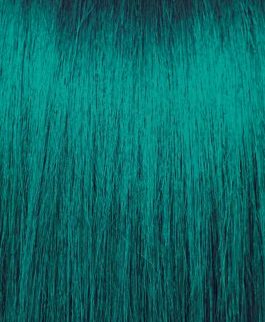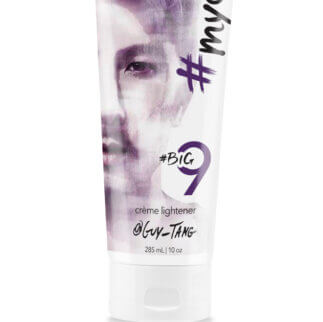Source: Sidelnikov | Dreamstime.com
With so many different hair color techniques gaining popularity lately, it’s not hard to get them confused. Between ombre looks, balayage hair, halo hair, money pieces, lowlights highlighting and the variations of each, it can also be difficult for clients to decide on a specific look before they get to the salon. To help clients decide on a specific look that works best for them, it’s important for stylists to know exactly what’s available. Reverse balayage, which is a unique take on the traditional blonde balayage technique, is a versatile and flattering option to offer in terms of freehand hair color.
The traditional balayage look has become a staple in the world of professional hair color, with a growing number of stylists naming this technique as their specialty. The word balayage translates to “sweeping” in French and the look quite literally sweeps darker shades over hair and becomes lighter as the color moves down the hair. The hair color technique is loved by so many because the results look natural and healthy and do not accentuate roots or subsequent hair growth. The reverse balayage technique shares some core qualities with traditional balayage and offers a stunning lived-in look while remaining unique and noticeably different from its sister technique.
What Does It Mean to Reverse the Balayage Technique?
It might sound a bit confusing, but the “reverse” part of this technique refers to where the lighter color is placed throughout the hair. Reverse balayage looks a bit like an upside-down traditional balayage, though the balance of blonde hair and darker strands is not always as concentrated on one half of the hair like it is with a traditional balayage.

@mayelamuroestilista via Instagram powered by Squarelovin
It’s important to remember that in the balayage vs. highlights conversation, balayage involves applying hair color directly to the hair freely and without the use of foils. This means that balayage results are both customizable and unique to the stylist’s actual application. When it comes to reverse balayage, this means that colorists and stylists can create a unique look that lightens the top portion of the hair and darkens as the lighter color sweeps down and fades away in a way that appears natural. The use of a salon-quality hair lightener is important here in order to get the desired look. Stylists should use their chosen lightener thoughtfully in order to maintain natural balayage highlights when reversing the technique.
The Versatility of Reverse Balayage
Reverse balayage is a versatile technique that works well with various hair types and colors. For those with blonde hair, it can add depth and dimension, creating a more natural, lived-in look. This technique is particularly beneficial for natural blondes who want to experiment with dark brown shades without committing to an all-over color change.
For those with brown hair, reverse balayage introduces lighter strands near the roots, brightening the overall appearance and adding movement to the hair. This technique is excellent for creating bronde — a perfect blend of brown and blonde tones that offers a sun-kissed appearance.
Curly hair can also benefit from reverse balayage, as the technique allows for strategic placement of color to enhance the natural curl pattern and create depth. The freehand application ensures the color complements the curls, rather than creating harsh lines that disrupt the natural flow of the hair.
One of reverse balyage’s main appeals is its low-maintenance nature. Unlike traditional highlights or all-over color, reverse balayage grows out gracefully and requires minimal touch-ups. This makes it an excellent option for clients who crave a fresh look but don’t have room in their time or budget for frequent appointments with a hairstylist.
How to Get the Reverse Balayage Look
The key to a great reverse balayage is a light hand. With freehand techniques like balayage, stylists should be careful not to add too much lightener or apply too much hair color towards the roots, as doing so will cause the hair to look grown out and unhealthy. Instead, think of the color towards the top of the head as more of a sun-kissed look and add smooth, natural sweeps of color gently around the crown. It’s important to utilize professional salon accessories during the reverse balayage process to ensure the application process remains clean and tidy.
Toner plays a crucial role in achieving the perfect balayage, too. After lightening the selected sections of hair, the colorist typically uses toner to refine the color and create a more cohesive look. For example, they may apply an ashy toner to cool down warm, brassy tones and create more natural-looking highlights. Whether the goal is a warm, golden blonde or a cool platinum blonde, the right toner makes all the difference.

@frances_hairartist via Instagram powered by Squarelovin
Once the color has been applied and toned, it’s all about styling and using the optimal salon-quality hair care products to help the client’s hair look shiny, healthy and hold the color for as long as possible. This versatile look works with all sorts of hairstyles, so feel free to get creative! When the reverse balayage is styled and complete, stylists should remind their clients that it’s important to use shampoo and conditioner made for color-treated hair in order to keep their beautiful balayage looking healthy and full of life.
Wrapping Up
Reverse balayage offers a fresh twist on traditional hair color techniques and provides a versatile, low-maintenance option for clients seeking a lived-in look. It works well with various hair lengths and colors, and it’s suitable for both curly and straight hair. By placing lighter shades near the roots and transitioning to darker tones, reverse balayage creates depth, dimension and movement.
As the demand for natural-looking hair color continues to grow, reverse balayage stands out as one of the most popular options for both hairstylists and clients, thanks to its blend of artistry and practicality.



















Share Your Feedback